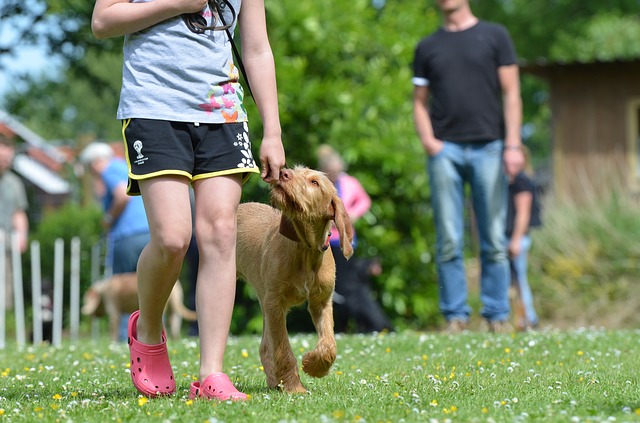One of the main reasons many dog owners are hesitant to try positive reinforcement training is because they are worried about always having to have food on them to get their dogs to obey. However, if the training is done correctly, you should not have to use food past the initial learning of the behavior. Sometimes, you might not use food even then, but what you do need is a reward of some type.

Why Trainers Use Food At The Start
So if we are going to toss the treats, why do we start with them? Food of some type is often used at the beginning because for most dogs, it’s one of their top “desires.” Since the reward is something your dog really wants, it’s easy to get him to work for it. For this same reason, you are paid with money (and not “less desirable” things like toys or paintings). While you may enjoy the latter, you don’t need it. You need money just like your dog needs food. Not all dogs are “food motivated,” however. For those that are not, your trainer may never use food.
For those that are, though, there comes a point where the behavior has been reinforced enough that your dog will do it even if they are not being reinforced with food. Lucky for us, our own jobs don’t work that way!
How To Use Everyday Rewards
Once you transition off treats, you still need to reward your dog sporadically to keep the behavior reinforced (remember, dogs do what gets reinforced!). You can do this by using anything your dog likes as a reward. For example, my youngest Sheltie loves to lick your face. So, if I don’t have a treat handy, I use that as a reward and he gets so excited about the training! Below are a few more typical rewards that your dog may like:
Related: What is the best dog training online?
Toys/Play. Toys and playing with you are most dogs’ “second” favorite thing in the world, next to food. They are a great reward. You can throw a toy, play tug with your dog, etc., after he does the behavior you asked of him. Having special “training” toys is good – these are the favorite toys your dog only gets when he is working with you.
Sniffing. If your dog loves to go off and sniff – often pulling the leash as a result – you can use sniffing as a reward for walking nicely on the leash. When he is walking nicely, give him your release word, and then let him sniff. Some even put sniffing on a cue like “go sniff.”
Petting. For some dogs, simple petting can be a reward. This one’s easy because you always have it with you!
Freedom. This is good for the dog that may be a bit more difficult to train because he wants to go do his own thing. So, reward him for listening to you by allowing him time to be “free.” Just be sure you can get him back to you to continue training, so having him on a long line might be a good idea. At the very least, make sure you’re in a safe, enclosed space!

These are just a few options. Remember, anything your dog likes can be a reward, so pay attention to what your dog gets excited about and then come up with ways to use it for training.
 Toledo, United States.
Toledo, United States.